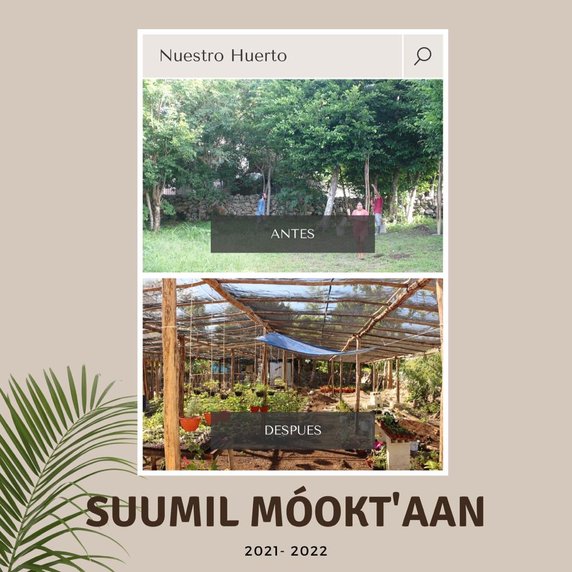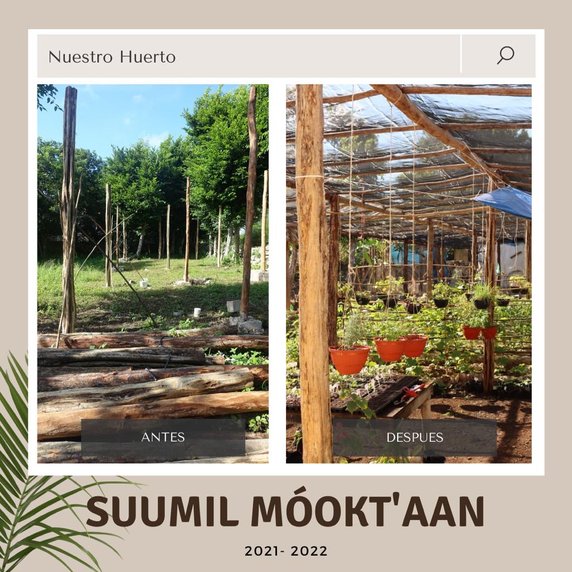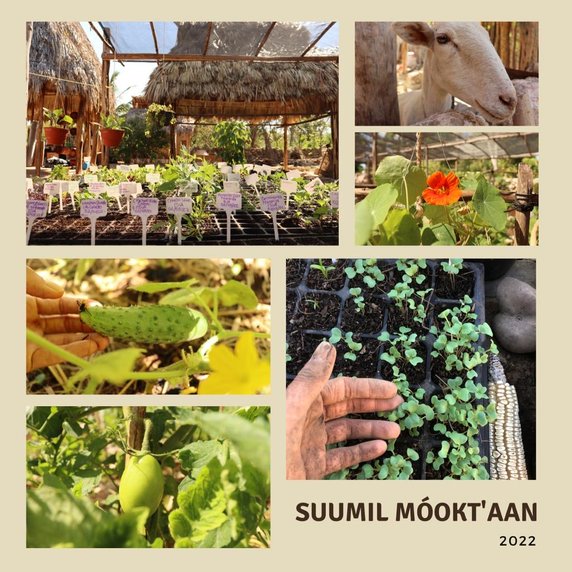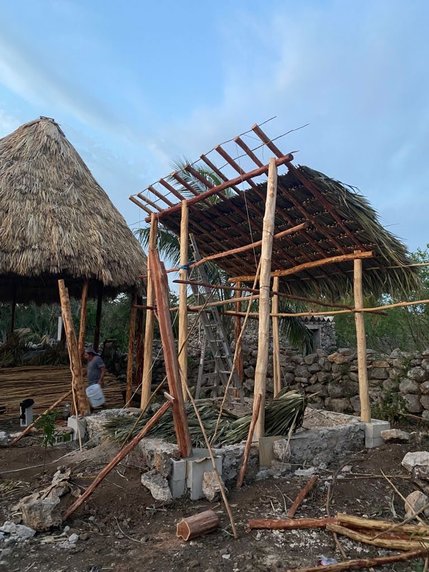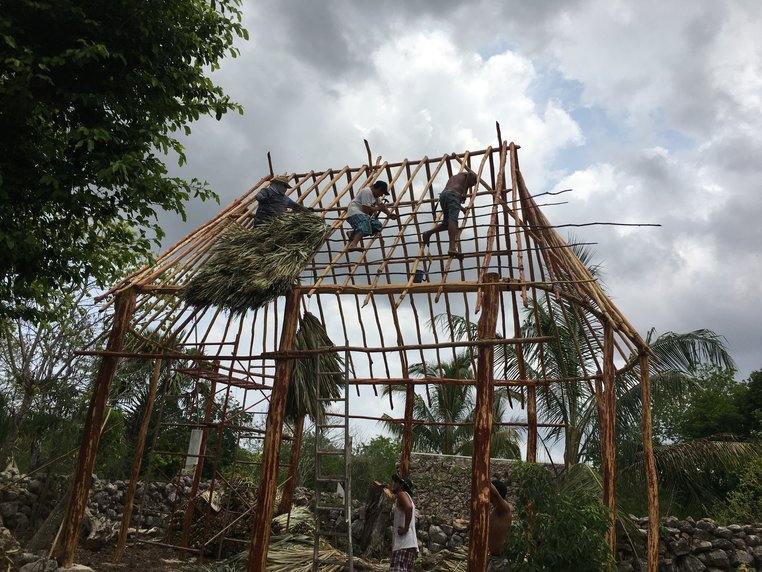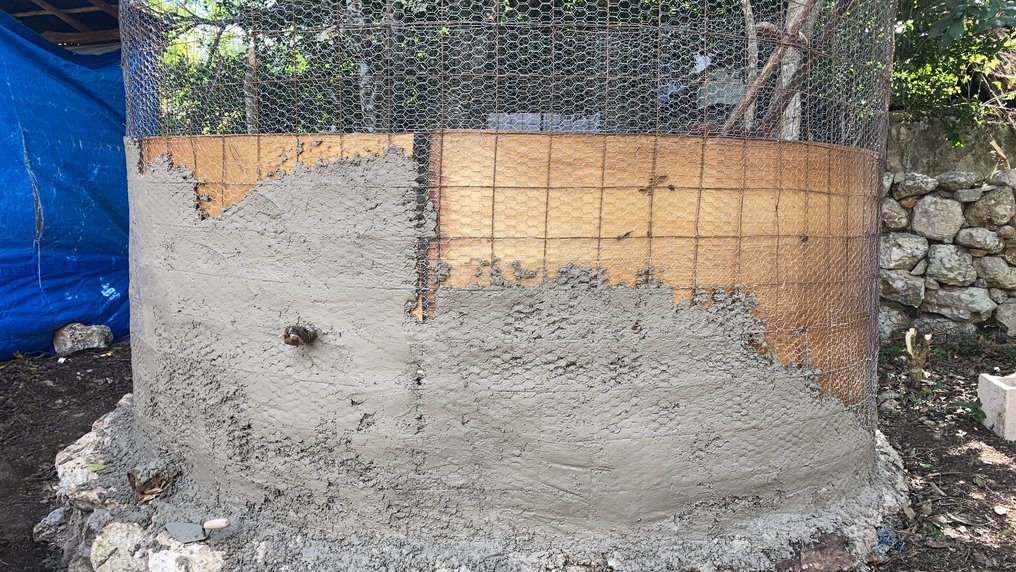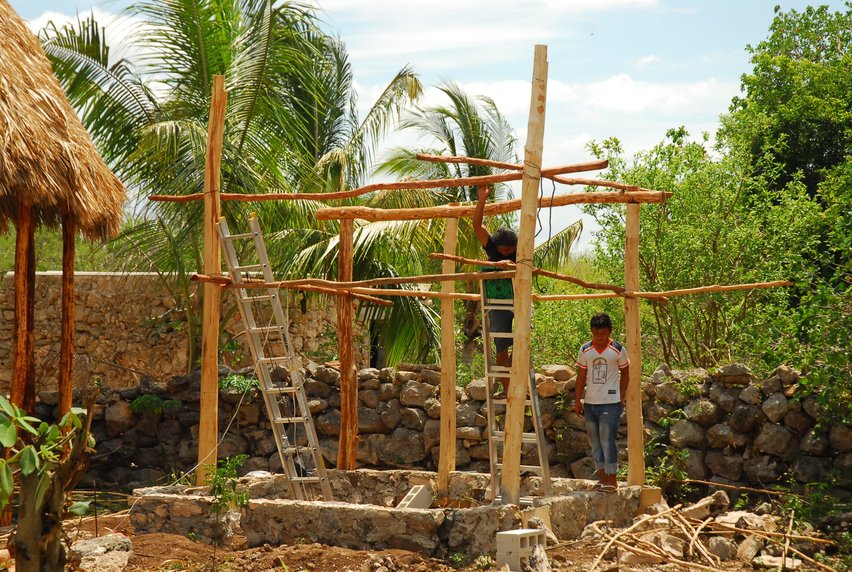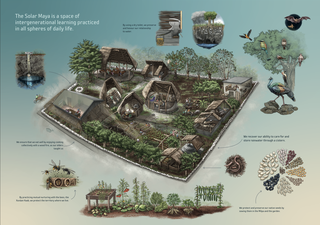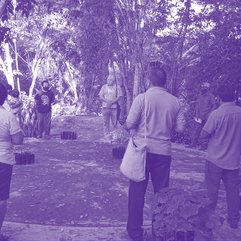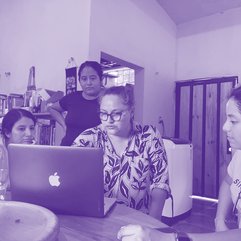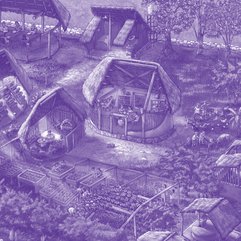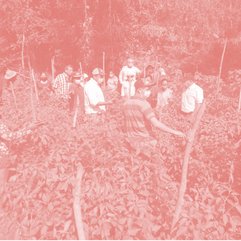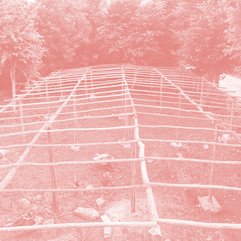The Solar Maya as a Collective Learning Space
The solar maya refers to a way of organizing a plot of land. The Colectivo Suumil Móokt'aan is developing a solar as a collective learning space within their community: “The solar maya has a deep connection with our territory. It is the space where families live within the community. Together with the milpa, it represents how we have historically organized our lives.” To facilitate practices of collective learning, the group facilitated the construction of a solar along with a palapa (an open classroom), a house for the native Melipona bee, a seed house, a dry toilet, and a collective kitchen. The structures were based on revisiting vernacular construction methods that also respond to contemporary ecological challenges. This process involved elders of the community, who shared their knowledge on traditional materials and building techniques, and members of younger generations, who engaged with this architecture by using various methods of craftsmanship.
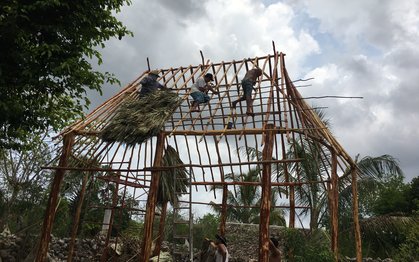

This process involved elders of the community, who shared their knowledge on locally sourced materials, such as trees, palm leaves and clay, and traditional building techniques.
The xa'anil naj, our Mayan house made of palm leaves, carries both a cultural and a functional significance, because it uses local materials that best suit our climatic conditions. In reinstituting the Mayan house, we are reinstating its central place in our lives.

 Construction of an open classroom as a palapa (an open palm roof structure) in the technique of the Mayan house.
Construction of an open classroom as a palapa (an open palm roof structure) in the technique of the Mayan house.

The workshop “Nourishing the Body-Territory,” led by Álvaro Salgado, member of La Vía Campesina and the Red en Defensa del Maíz, focused on the use of natural additives to the soil to protect biodiversity, plants, and soil health, and to produce healthy food. The workshop was attended by older and younger Sinanché residents as well as representatives of different agroecological initiatives. The participants exchanged and identified regional differences in soil, contamination, and access to water, and discussions evolved around the impact of industrial agriculture as well as alternative forms of practicing agriculture. As a result, practical knowledge about the identification of the quality and health of soils, and ways of working with it, were gained.

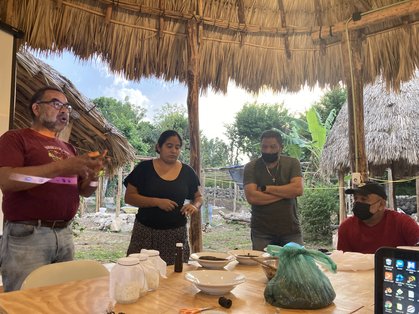 Workshop with Álvaro Salgado on agroecological methods for improving soil quality
Workshop with Álvaro Salgado on agroecological methods for improving soil quality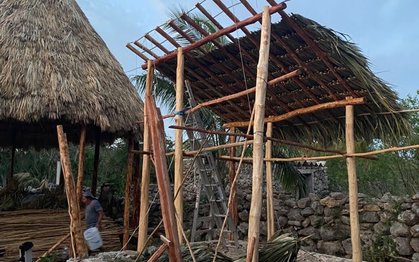

The workshop was led by the architect Juan Casillas Pintor. The workshop made use of paakluum, a Mayan wall construction technique that employs local materials, to construct a dry toilet. In addition to revitalizing traditional techniques, the workshop aimed at raising awareness for the benefits of working with local materials, considering also the greater resilience of such construction methods in the face of climatic and environmental crises. This applied technology is part of the work being done by Colectivo Suumil Móokt'aan to regenerate the water: “While for us water is sacred, large corporations see it as a mere resource for generating economic profit. Water is contaminated by large-scale pig farming, real estate development projects, excessive tourism, as well as government policies permitting inadequate sanitary systems that profoundly damage our water” (leaflet, Colectivo Suumil Móokt'aan). Combined with a system for collecting rainwater and for the natural purification of gray water, the dry toilet forms part of a closed water cycle in the solar.

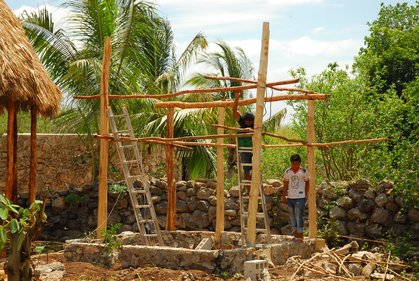 Construction of the dry toilet using vernacular construction methods
Construction of the dry toilet using vernacular construction methods
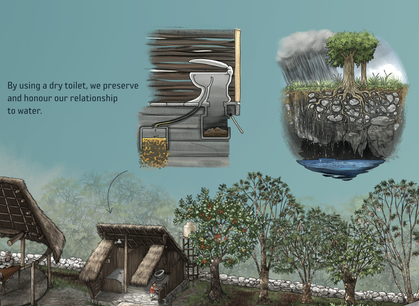 Details of the dry toilet and groundwater system from Alberto Guerra’s drawing of solar maya
Details of the dry toilet and groundwater system from Alberto Guerra’s drawing of solar maya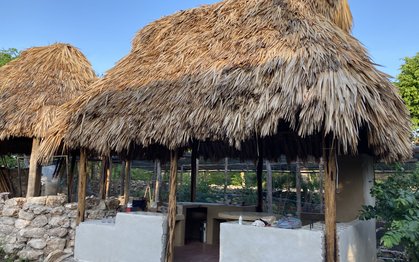

A collective kitchen was built to form the central part of the solar, also built through the use of traditional building methods. As a microcosm of Mayan society, the solar is also the fundamental place for establishing complex relationships with nature as well as within the community. The collective kitchen is used as a space to exchange ideas and share recipes, knowledges, experiences and culinary traditions. Communal cooking and eating merges with the tradition of storytelling.
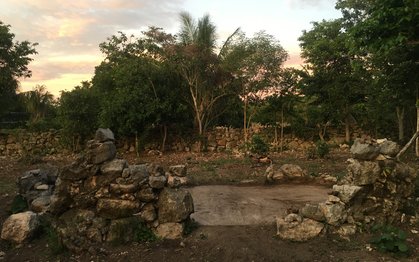

It is vitally important for us to cultivate the milpa, thus preserving different native seeds and recovering local varieties of vegetables.
The collection, storage, and exchange of seeds from crops traditionally grown in the milpa plays a central role in Mayan food sovereignty. At the core of the milpa is the mutually supportive plant community of maize, beans and squash, the so-called three sisters. This complex agricultural system has been cultivated by Maya communities for thousands of years and has been adapted to the respective local and cultural conditions. The Maya food system in Yucatan knows 100 to 250 different varieties of crops. This diversity is maintained through the continuous cultivation of endemic seeds. The construction of a traditional seed house in the solar allows for the preservation of these varieties as well as the exchange with other communities.

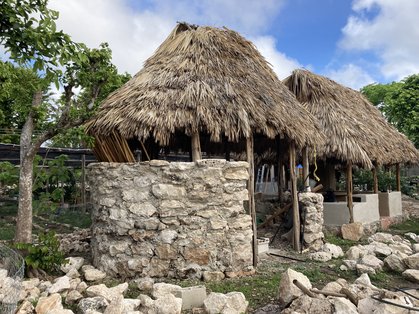 House of seeds under construction
House of seeds under construction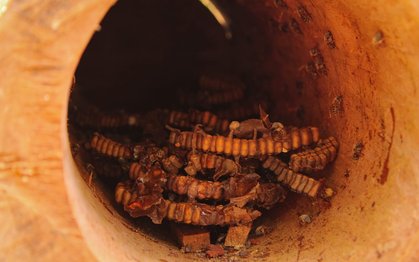

Over thousands of years, a close relationship has developed between Mayan culture and the native Melipona bee. As Colectivo Suumil Móokt'aan states:
The care for native bees is a crucial part of our way of feeling and thinking in the Mayan world.
The native bees are increasingly threatened by the destruction of the forest, the use of pesticides in agriculture, and the loss of biodiversity. To take care of the native bee varieties as well as to facilitate knowledge about how to keep them, and how to use their honey, pollen, and propolis to cure ailments, the collective built a bee house by using vernacular construction techniques:
By mutual nurturing with the bees, the xunáan kaab, we protect the territory in which we live.

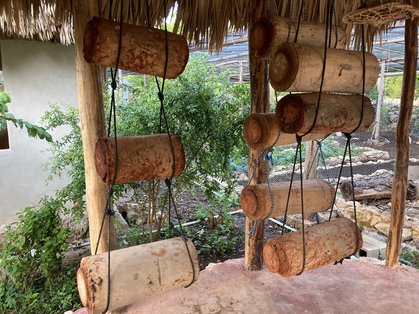 Melipona bee hives
Melipona bee hives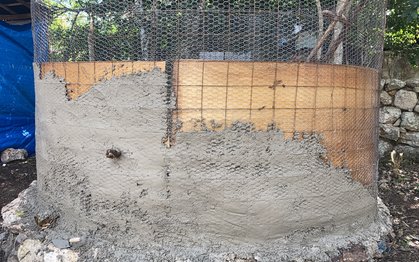

In the cistern workshop, Ángel Kú shared a resource-saving cement technique with younger residents from Sinanché. The construction is used to collect rainwater. Safeguarding the water is a core principle of the collective:
The wisdom of the Mayan people is interwoven with the care of water, making it a sacred and vital part of our lives, ceremonies, and spirituality.
Under the limestone of the Yucatan Peninsula lies one of the largest groundwater reservoirs on earth. The local cenotes (known as ts'ono'ot, literally “sacred springs”) provide access to this water source. However, the groundwater is increasingly threatened by privatization and most significantly by the discharge of wastewater from urbanization, tourism, and industrial pig farming. The cistern, like the dry toilet and a natural filtration system for gray water, serves to protect the water and provides the community with practical and affordable water supply options without contaminating the groundwater.

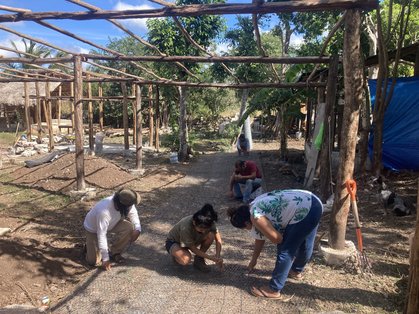 Construction of a water cistern
Construction of a water cistern
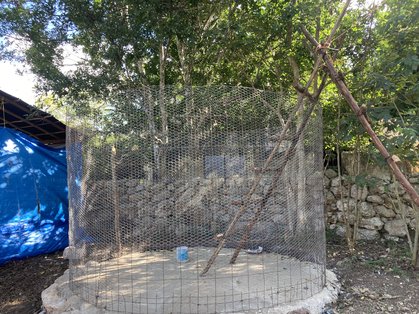 Construction of a water cistern
Construction of a water cistern


